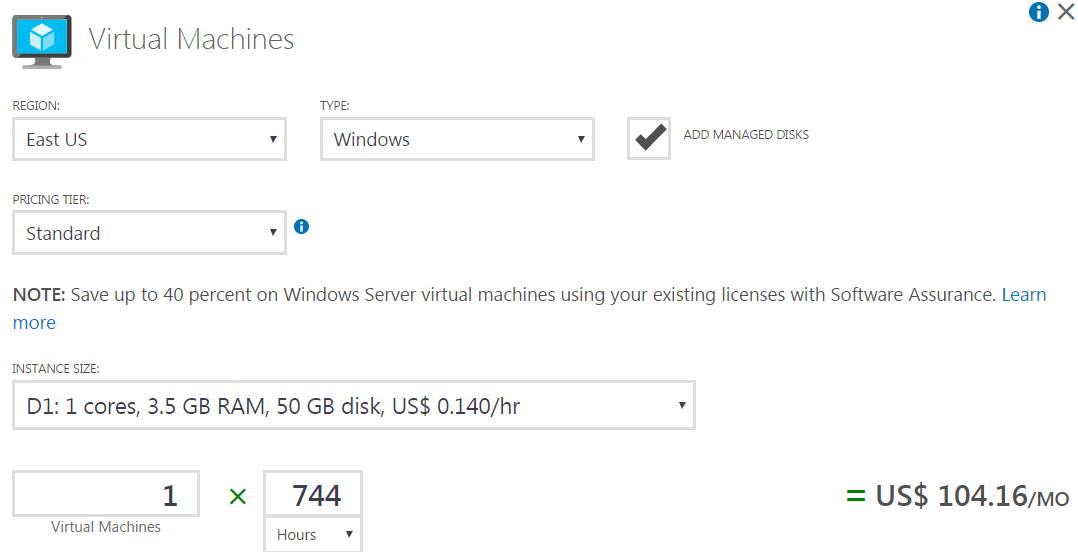CONFIGURING AZURE VM IN COST EFFECTIVE WAYS

- Region Based Azure Pricing
Azure offers a list of around 30 Locations spread across multiple continents to deploy one’s VM. Based on the users current location one should deploy the VM to one location but one thing I would like to tell you that the Azure Pricing is different in different regions. One should Design the deployment strategy such that there will be performance as well as cost effectiveness. For example, here I am using the exact same Configuration of Windows OS with 1 Core and 3.5 GB RAM, 50GB Disk and running them in the standard pricing tier. When I am hosting it in the EAST US, the total monthly billing for 744 hours comes out to be $104.16/month with a billing price of $0.140/ Hr

But when I tried to deploy the exact same configuration in the South India, it was billed at 0.131 $/hr and the total amount is coming out to be $97.46. Here you can see that there is a price difference of ~$7 but imagine running 100s or 1000s of VMs and saving that load of money in your environments can help.

- Azure MarketPlace Pricing
Azure Marketplace contains 1000s of images from Microsoft and partner vendors. It has all sort of predefined configuration images that will work good for multiple scenarios.

Along with that, if you use an image directly from the marketplace, the VM is billed with a license fee charged per hour so it will save you moving your license to azure vm and then use it.
For instance, if you’re using Red Hat Enterprise Linux, in that scenario you have two options. One is to buy the license and then upload it to azure and other is to use the image from marketplace and instead of giving the license fee at once you will be billed along with the license fee but that will be billed per hour and you don’t have to pay the lump-sum amount straightaway.
- Azure Adviser

Azure Adviser is a recommendation platform built in the azure portal that basically runs over all of the resources and based on the best practices and usage pattern it recommends the user to recommend to scale up/down or shut down the resources that’s not in use. So if we are using a a VM with a higher configuration but we are not utilizing the resources well so it will suggest us to scale down the VM in order to save billing and my performance won’t be affected as I was not utilizing the resource properly
- Auto Shutdown
In Many scenarios, the developer or user work on VMs for not more than 10-12 hours a day but if we keep the VMs running the billing will be for 24 hours and it will be billed for weekends as well where hardly or no one will be using it. In order to save the billing and optimal uses of resources, Azure has the capability to configure the Auto Shut down feature which allows you to enter the date and time in some specific zone and then you can setup your shut down policy based on the requirements.
- Azure Dev Test Lab
Just like the feature above Microsoft has enabled the Azure Dev Test Lab so that you don’t need to remember to actually stop the VMs. This service allows you to setup VMs for Development and Testing purposes that will automate the shutdown and startup of your VMs for you. You can even minimize waste by using quotas and policies as well. It can be applied to multiple resources at a time.